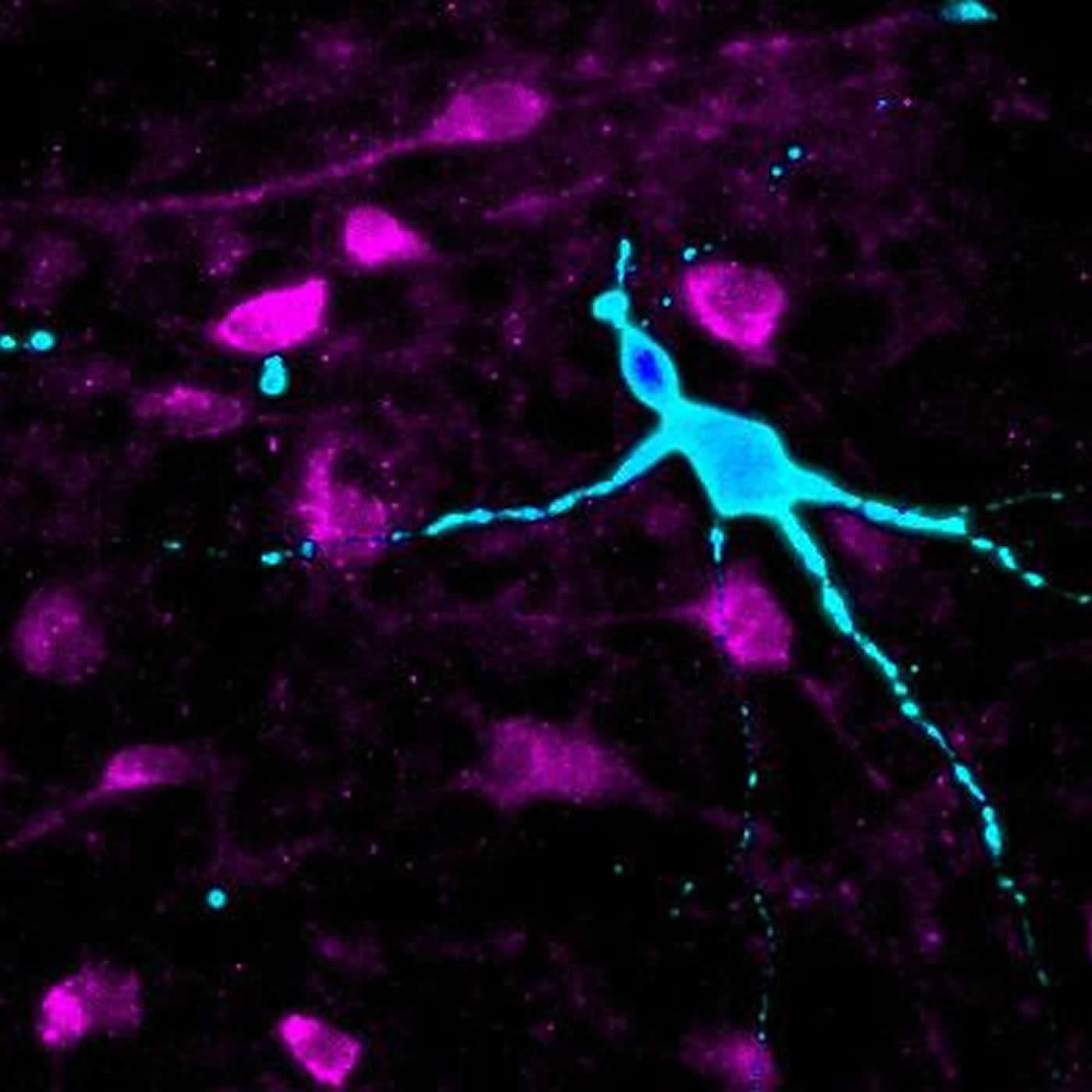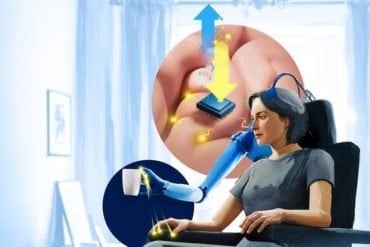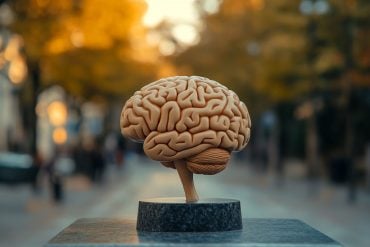Summary: According to researchers, neurons generated from super obese people are more likely to dysregulate hormones related to hunger and feeding behaviors.
Source: Cell Press.
US scientists have successfully generated hypothalamic-like neurons from human induced pluripotent stem cells (hiPSCs) taken from the blood and skin cells of super-obese individuals and people with a normal body weight. The researchers found that the brain cells derived from the super obese were more likely to dysregulate hormones related to feeding behavior and hunger, as well as obesity-related genes and metabolic pathways. The work appears April 19th in the journal Cell Stem Cell.
“This is the first step in applying an iPSC-based platform to model complex polygenic diseases such as obesity,” says senior author Dhruv Sareen, a stem cell biologist at Cedars-Sinai Medical Center. “We developed a great platform that could potentially be used to evaluate the effects of experimental therapeutics on patient-specific hypothalamic neurons from obese patients with different, genetic backgrounds, body mass index, and environmental exposures.”
In the majority of obese individuals, the genes they inherited each have small effects that contribute to obesity susceptibility. Many of these genes regulate hypothalamic functions such as food intake and energy metabolism. But human hypothalamic tissues are not readily accessible, underscoring the urgent need for relevant neuronal models for obesity research.
To overcome this problem, Sareen and his collaborators developed an hiPSC-based approach for generating functional hypothalamic-like neurons that model forms of obesity with complex genetic origins. They generated hiPSCs from blood and skin cells taken from super-obese individuals, who had a body mass index of 50 or more and multiple genetic variants, as well as normal subjects with a body mass index of 25 or less. These hiPSCs were then converted into hypothalamic-like neurons that shared gene expression profiles similar to those of adult post-mortem hypothalamus cells.
These neurons secreted neuropeptides that regulate feeding behavior in response to the hunger hormone ghrelin and the satiety hormone leptin, which are released by cells in the gut and fat tissue, respectively. Hypothalamic-like neurons generated from super-obese individuals showed an abnormally strong response to ghrelin, in contrast to those derived from normal subjects. Moreover, hypothalamic-like neurons generated from super-obese individuals retained signs of dysregulation in obesity-related genes and metabolic pathways, despite undergoing the reprogramming process.

hiPSCs have mainly been used to study rare forms of diseases caused by mutations in a single gene. Although a couple of labs recently generated hiPSC-derived hypothalamic-like neurons, they did not demonstrate that these cells secrete neuropeptides in response to hormonal signals or can accurately model complex polygenic forms of severe human obesity.
“Ultimately, we are paving the way for personalized or precision medicine, in which drugs could be customized for obese patients with different genetic backgrounds and metabolic disease status, depending on their tolerance and reaction to drug combinations,” says Sareen.
One potential limitation of the study is that feeding behavior is regulated by the hypothalamus in close concert with many other organs and cell types, such as the pituitary gland, pancreas, liver, gut and fat. In future studies, Sareen and his team will test whether hiPSC-derived hypothalamic-like neurons communicate with other relevant cell types and form functional circuitry both in a dish and in living organisms.
Sareen says, “There are several intermediate steps before we can realize the potential of this iPSC technology to become a reliable platform to screen potential therapeutics for obesity and other metabolic diseases.”
Source: Joseph Caputo – Cell Press
Publisher: Organized by NeuroscienceNews.com.
Image Source: NeuroscienceNews.com image is credited to Uthra Rajamani and Dhruv Sareen at the Cedars-Sinai Board of Governors Regenerative Medicine Institute.
Original Research: Abstract for “Super-Obese Patient-Derived iPSC Hypothalamic Neurons Exhibit Obesogenic Signatures and Hormone Responses” by Uthra Rajamani, Andrew R. Gross, Brooke E. Hjelm, Adolfo Sequeira, Marquis P. Vawter, Jie Tang, Vineela Gangalapudi, Yizhou Wang, Allen M. Andres, Roberta A. Gottlieb, and Dhruv Sareen in Cell Stem Cell. Published April 19 2018.
doi:10.1016/j.stem.2018.03.009
[cbtabs][cbtab title=”MLA”]Cell Press ” Neurons Derived From Super-Obese People Respond Differently to Appetite Hormone.” NeuroscienceNews. NeuroscienceNews, 19 April 2018.
<https://neurosciencenews.com/super-obese-appetite-hormone-8844/>.[/cbtab][cbtab title=”APA”]Cell Press (2018, April 19). Neurons Derived From Super-Obese People Respond Differently to Appetite Hormone. NeuroscienceNews. Retrieved April 19, 2018 from https://neurosciencenews.com/super-obese-appetite-hormone-8844/[/cbtab][cbtab title=”Chicago”]Cell Press ” Neurons Derived From Super-Obese People Respond Differently to Appetite Hormone.” https://neurosciencenews.com/super-obese-appetite-hormone-8844/ (accessed April 19, 2018).[/cbtab][/cbtabs]
Abstract
Super-Obese Patient-Derived iPSC Hypothalamic Neurons Exhibit Obesogenic Signatures and Hormone Responses
The hypothalamus contains neurons that integrate hunger and satiety endocrine signals from the periphery and are implicated in the pathophysiology of obesity. The limited availability of human hypothalamic neurons hampers our understanding of obesity disease mechanisms. To address this, we generated human induced pluripotent stem cells (hiPSCs) from multiple normal body mass index (BMI; BMI ≤ 25) subjects and super-obese (OBS) donors (BMI ≥ 50) with polygenic coding variants in obesity-associated genes. We developed a method to reliably differentiate hiPSCs into hypothalamic-like neurons (iHTNs) capable of secreting orexigenic and anorexigenic neuropeptides. Transcriptomic profiling revealed that, although iHTNs maintain a fetal identity, they respond appropriately to metabolic hormones ghrelin and leptin. Notably, OBS iHTNs retained disease signatures and phenotypes of high BMI, exhibiting dysregulated respiratory function, ghrelin-leptin signaling, axonal guidance, glutamate receptors, and endoplasmic reticulum (ER) stress pathways. Thus, human iHTNs provide a powerful platform to study obesity and gene-environment interactions.






